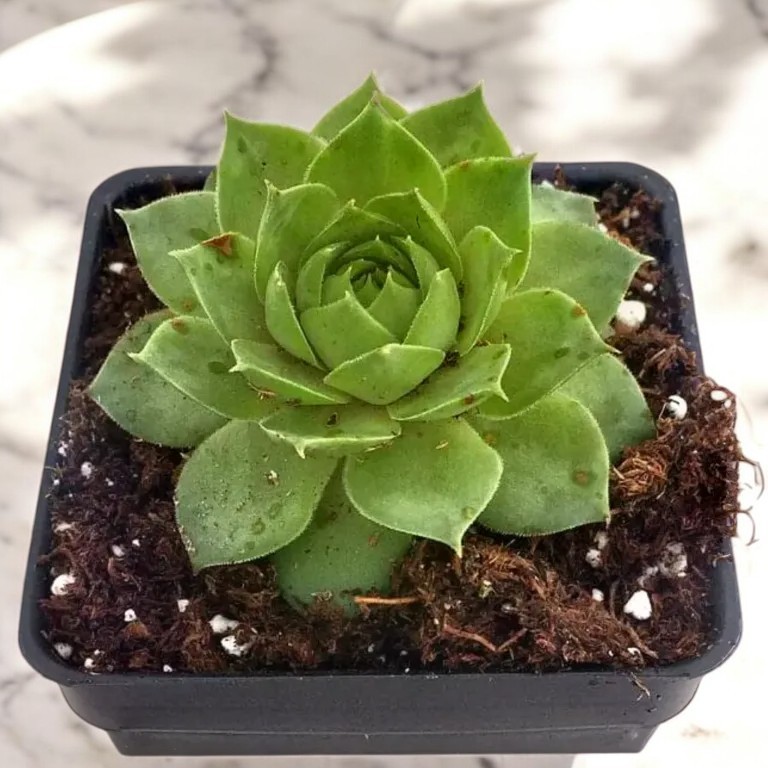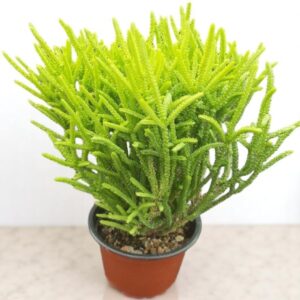Sempervivum laxmi kamal plant ( 1 piece )
Sempervivum laxmi kamal , commonly known as hens and chicks or houseleeks, are low-growing succulent plants that form rosettes of fleshy leaves. They are easy to grow and require minimal care.
- Delievery rs 99 only?
- ?Dispatch in 2-3 days
- Country of origin: India
- ?Make unboxing video of parcel for easy returns.
- Bare rooted plant
₹80.00 Original price was: ₹80.00.₹49.00Current price is: ₹49.00.
In stock
Important Notice: When replacing damaged plants, you must record an unpacking video of the package within 12 hours of delivery.
🌿 All plants are shipped bare-rooted.
Sempervivum laxmi kamal, commonly known as hens and chicks or houseleeks, are low-growing succulent plants that form rosettes of fleshy leaves. They are easy to grow and require minimal care.
guidelines for caring for sempervivum laxmi kamal :
- Light requirements: Sempervivum plants thrive in full sun to partial shade. Place them in a location that receives at least 4-6 hours of direct sunlight per day. However, they can tolerate some shade, particularly in hotter regions. Balanced light exposure promotes their vibrant colors and compact growth.
- Temperature: Sempervivum plants are hardy and can tolerate a wide range of temperatures. They are best suited for outdoor cultivation in temperate to cool climates. They can withstand freezing temperatures and even survive in cold winter conditions.
- Watering: Sempervivum plants have low water needs and are adapted to arid environments. Allow the soil to dry out completely between waterings. In general, water them sparingly, about once every 1-2 weeks during the active growing season (spring and summer). Reduce watering in the winter months, as they enter a period of dormancy. Overwatering can cause root rot, so it’s better to underwater than overwater.
- Soil: Sempervivum plants prefer well-draining soil. Use a cactus and succulent potting mix or create a mixture of regular potting soil, perlite, and coarse sand. Good drainage is essential to prevent waterlogged soil.
- Fertilizer: Sempervivum plants are not heavy feeders and can thrive without frequent fertilization. They generally do well with minimal nutrients. However, you can feed them with a balanced, water-soluble fertilizer diluted to half strength during the active growing season. Apply the fertilizer sparingly, about once every 2-3 months.
- Propagation: Sempervivum plants are prolific propagators. They produce offsets, also known as chicks, around the base of the parent rosette. Gently separate the offsets and plant them in well-draining soil. They will develop their own root systems and grow into new plants. Sempervivum can also be propagated from leaf cuttings, although this method is less common.
- Pruning: Pruning is generally not necessary for sempervivum plants. However, you can remove any dried or dead leaves or spent rosettes to maintain a tidy appearance. Use clean, sharp scissors or pruning shears for pruning.
- Pests and diseases: Sempervivum plants are generally hardy and resistant to pests and diseases. However, they can occasionally be susceptible to common succulent pests such as mealybugs or aphids. Inspect the plants regularly and treat any infestations promptly with appropriate pesticides or a solution of water and mild soap.
Sempervivum plants are beautiful and versatile, making them suitable for various garden arrangements, including rock gardens, containers, or even living walls. With their natural resilience and minimal care requirements, they can provide year-round interest and charm to your space.
You can also visit our store to buy succulents online , buy succulent planters, buy fertilizers online with various types of indoor plants and hardy succulents . You can refer to our informational site for more details about plant varieties.Click here for agricultural knowledge information.







